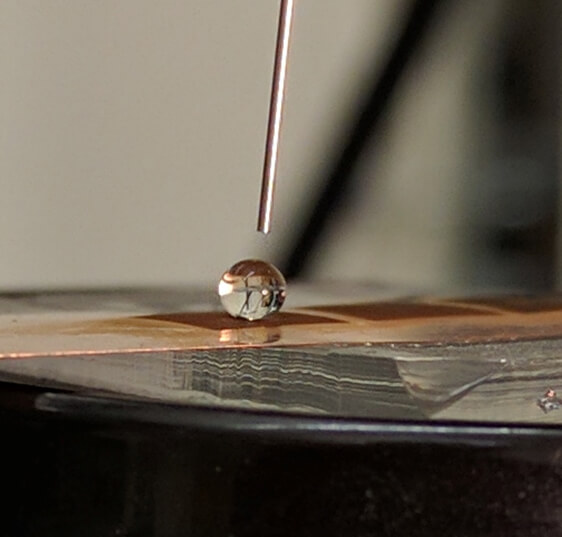Manufacturing process also creates super-small channels for better electronics
WEST LAFAYETTE, Ind. – Imagine a better windshield that easily repels water and requires less wiping. Now imagine if that same technology could allow doctors to better detect disease or abnormalities in patients.
Purdue University researchers have made new advancements in a manufacturing process they developed that creates super-small channels to repel water and improve medical, electronic and other devices.
 Purdue University researchers have made new advancements in a manufacturing process they developed that creates super-small channels to repel water and improve medical, electronic and other devices. (Image provided)
Purdue University researchers have made new advancements in a manufacturing process they developed that creates super-small channels to repel water and improve medical, electronic and other devices. (Image provided) "Our technology provides an innovative way of creating superhydrophobic, or non-water-resistant, non-flat surfaces on metallic and polymer materials," said Yung Shin, the Donald A. and Nancy G. Roach Professor of Advanced Manufacturing in Purdue's College of Engineering. "There is no other current technology available for creating internal hydrophobic surfaces for microchannels in a cost-effective way."
The Purdue method creates small channels where water cannot stick to the surface or gives little resistance in the flow. Water or other liquids can be sent through and create smaller cooling channels and microfluidic devices.
"The technology has many potential applications especially in the biomedical and electronic industries," Shin said. "It provides more effective cooling options than conventional methods and helps reduce the overall size of biosensors and other medical devices that use circulating fluid to detect unhealthy conditions in a patient."
Shin said the team also sees applications for the technology and manufacturing process in self-cleaning surfaces, airplane micro hydraulics and windshields.
 This image shows a water drop on a created superhydrophobic surface, showing a very high contact angle. Purdue University researchers developed a new manufacturing process for creating internal hydrophobic surfaces for microchannels. (Image provided)
This image shows a water drop on a created superhydrophobic surface, showing a very high contact angle. Purdue University researchers developed a new manufacturing process for creating internal hydrophobic surfaces for microchannels. (Image provided) Shin's team uses a two-step process to create the superhydrophobic surfaces. First, the researchers create patterns or features on a metal surface with an ultra-fast laser. Then, in a process called transfer molding, the researchers create that same pattern on the polymer.
The team worked with the Purdue Research Foundation Office of Technology Commercialization






